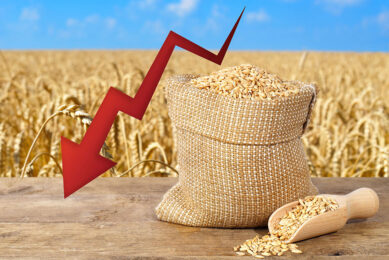Grain market gripped by unfavourable weather

The grain market is currently a weather market in all respects. In Western Europe, abundant rain has a huge impact. In the Black Sea region and in parts of Canada and the United States it is warm and dry.
The latest Wasde report from the US Department of Agriculture USDA (July 12) showed that the market balance for wheat is looking somewhat different than previously thought. The initial stock of wheat for the new 2021-22 season is smaller than earlier estimates in several countries. The United States in particular produces less. It gave the futures market an incentive to price changes, upwards.
On the physical market, the fact that a lot of rain fell in Western Europe last week also played a role, with major consequences in many places, as is well known. Better and drier weather is now on the way. As a result, the harvest can be picked up again. The backlog in the harvest, combined with the concern about the bad weather for the sector, have pushed up prices.
However, the situation in the futures markets with increased contract prices is mainly due to the continued deterioration in the fields of spring wheat in Canada and the northern United States. In a week, the price of the September 2021 wheat contract in Paris rose by € 17 per tonne, or by almost 9%. The futures market in Chicago showed a price increase for the September 2021 contract by almost 70 cents per bushel, or more than 12.5%.
Corn prices in Paris up
There is currently a heat wave in the Black Sea area, which is pushing up corn prices in Paris. For maize new harvest, the November 2021 contract, the price has now risen above the limit of € 200 per ton. Things are not going as fast here as with wheat, but the increase in the price level was more than € 10 in a week. The warm weather conditions have the advantage for Ukraine and Russia that the barley and wheat harvest can go very smoothly.











